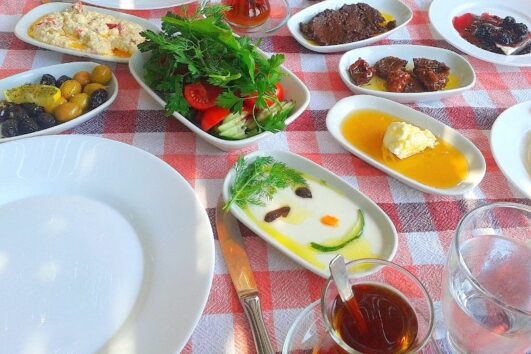In the past twenty years, Turkish cuisine has emerged onto the global food scene as a player to be reckoned with. Previously viewed as just a nation of kebab lovers, people everywhere have woken up to the fact that Turkish food dishes are more than just that. Fusing ingredients with unique cooking techniques, visitors to the country have more choice than ever before as regional dishes have also gone countrywide. From the simple starters to traditional dishes making the most of locally grown produce, even if you are a fussy eater, most dishes will satisfy and tempt you to second helpings.
What is Traditional Turkish Food?
Traditional Turkish food varies from region to region. This is mainly because of various cultural influences, the vast size of Turkey, the extreme differences in weather and the diversity of geographical landscapes. This means each area, produces different local products. For example, the northeast coastal region makes many dishes from hamsi (anchovy) since this is in abundance, while middle-eastern cultures heavily influenced the eastern regions due to their close proximity.
Particular staple ingredients, however, are used countrywide and as a visitor, you will most certainly be presented with them at a majority of meals. Bread is necessary to accompany every main meal, while a healthy carbohydrate frequently served is rice.
Also to the surprise of most new visitors to Turkey, fruit and vegetables are in abundance, making it an ideal country for vegetarians and vegans. Lamb and beef are more expensive than chicken, therefore making the latter more widely consumed but during the summer, coastal regions enjoy massive quantities of fresh fish and seafood. So knowing all that, let's get started on the dishes that you must try when visiting Turkey.
Turkish Food Dishes That Will Make You Hungry
Corba: Soup
One of the first recipes to try is traditional Turkish soup sold in abundance all over the country by restaurants called Lokantas. Turks believe soup is a great hangover cure and as such, Lokantas are often full after the bars and nightclubs have shut. They also eat it for breakfast, which is a tradition stemming from the days of the Ottoman kitchens. Time-honoured flavours to choose from include Lentil (Mercimek,) Iskembe (Tripe) and Paca (cow or sheep’s head and feet) To be like a real Turk, sprinkle a healthy dose of garlic and Pul Biber (red chilli flakes) on it.
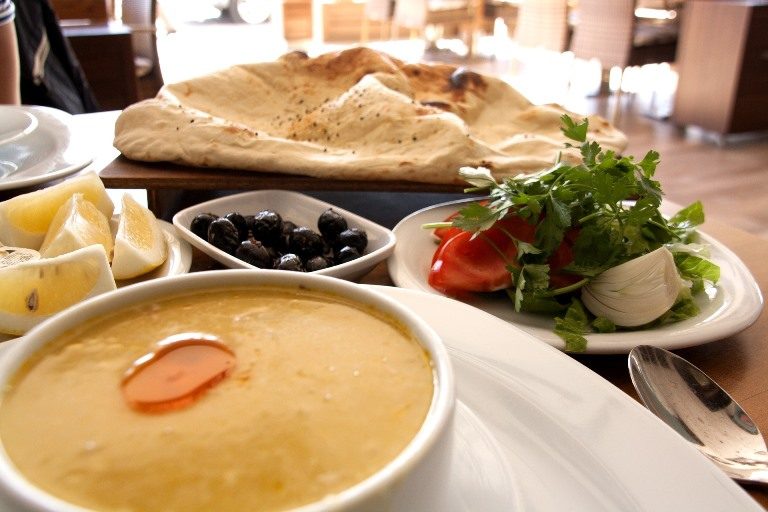
Mezes: Appetisers and Starters
The vast choice of fruit and vegetables, make up a delicious and rich array of mezes that are an integral part of dining out. Many small hot and cold dishes are delivered to the centre of the table for all diners to snack on slowly before their main course arrives. In the coastal resorts, seafood such as calamari or octopus adorns most tables. Choices to accompany them include Fava bean puree(much like humus), and Haydari (yoghurt flavoured with herbs, garlic and olive oil.) Also try grilled eggplant salad (Patlıcan Salatası), Samphire with garlic and olive oil (Deniz börülcesi), stuffed vine leaves (Sarma) and fried liver (Arnavut ciğeri).

Meat Dishes: Kebabs and Meatballs
Stereotyping Turkey by saying the donor kebab is the national dish, is a mistake because there are more than 40 different variations to try. Adana kebab, a signature dish of one of Turkey’s big cities is a blend of mincemeat and hot spices grilled on a long skewer over a charcoal fire. Urfa kebab, a similar version, instead omits the hot chilli spices while Şiş kebabs refer to marinated and grilled chunks of lamb or beef, likewise on a skewer with onions, tomatoes and peppers.
Çöp Şiş is smaller pieces of lamb, but one of our favourites is Iskender kebab. This healthy dose of donor meat, placed over flat, pide bread is smothered with lashings of melted butter, yoghurt and a flavourful tomato based sauce. Closely related to the kebabs, another must try dish is Kofte. Served with rice and salad, it is simply spiced meatballs but a satisfying dish all the same.
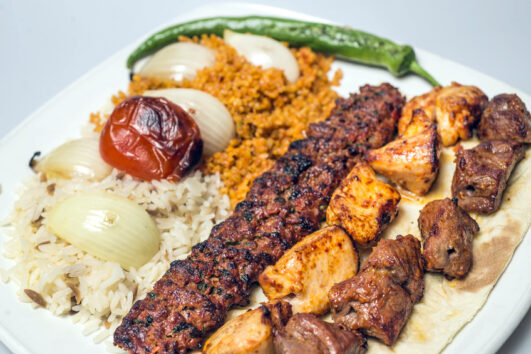
Snacks and Street Food
One major culinary achievement of the Turks is street food. Cheap and tasty and ordered to go, a subtle introduction into this type of cuisine is Kumpir, a jacket potato, mashed with butter and topped with various fillings. Otherwise, Gozleme, sold at markets and roadside cafés is a thin pastry filled with delectable items like cheese, spinach or spicy potato.
For a mid-morning snack, try simit, bagel-like bread with sesame seeds and two street food specialties that sell a lot in Istanbul are Balik Ekmek (fish sandwiches) or the addictive Islak burger of Taksim. Popular with night clubbers, the garlic infused burger topped with tomato sauce is hard to resist and great at curing hangovers.
For a Turkish style pizza, Pide with its various toppings is a good choice. Otherwise the thinner version of Lahmacun with finely chopped mincemeat, onions and peppers is mouth-watering when combined with Roka, the Turkish mustard-tasting version of arugula. Lastly, a must-try is the aromatic, rice stuff mussels called Midye, that are great snacky street food sold during the summer months.
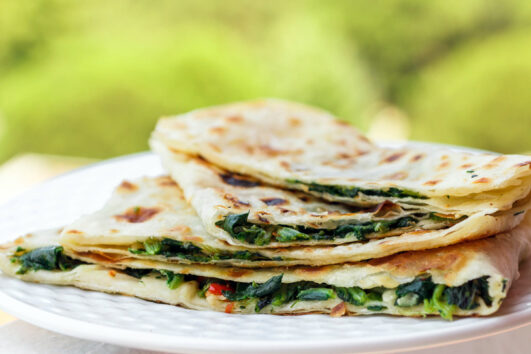
Desserts and Sweets
The vast range of Turkish desserts and sweets will delight anyone with a sweet tooth. The national favourite is, of course, Baklava, that is flaky pastry, layered with nuts and covered with sticky, sweet syrup. Another favourite sold on the streets at nighttime is lokma, deep fried dough that is also covered in sticky syrup.
A unique sit-down dessert to try is Tavuk Göğsü, a milky dessert dating from the Ottoman kitchens of which the main ingredient is chicken.! If you don’t want to take your taste buds on a wild ride away from your regular diet, a bowl of Firinda Sutlac much resembles the western style version of rice pudding, while dondurma (ice-cream) is an obvious choice but Turkish ice-cream is of a thicker and creamier consistency.
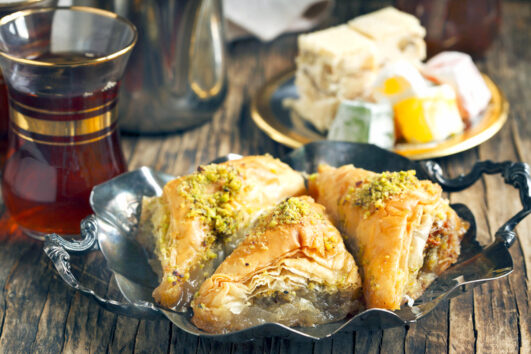
Turkish Breakfast
Lastly, any article about Turkish food would not be complete without mentioning the simple but essential way to start the day, and that is a healthy Turkish breakfast. Often sold using organic ingredients, tomatoes, cucumber, cheese, olives, and salami is paired with boiled or fried eggs. Of course, bread is served, and this is generously covered in lashings of delicious Turkish honey.
Handy to Know Tip: One Turkish phrase that you will frequently hear in restaurants is “Afiyet Olsun” and it means “enjoy your meal.”
You may also be interested in our cooking class tour: Combine learning how to cook local Turkish food with a visit to the ancient ruins of Ephesus. What makes our cooking classes so special and unique are the small class size that never exceeds 6 participants. We specialised in village style vegetable dishes and always use seasonal fresh ingredients. Find out more here.
